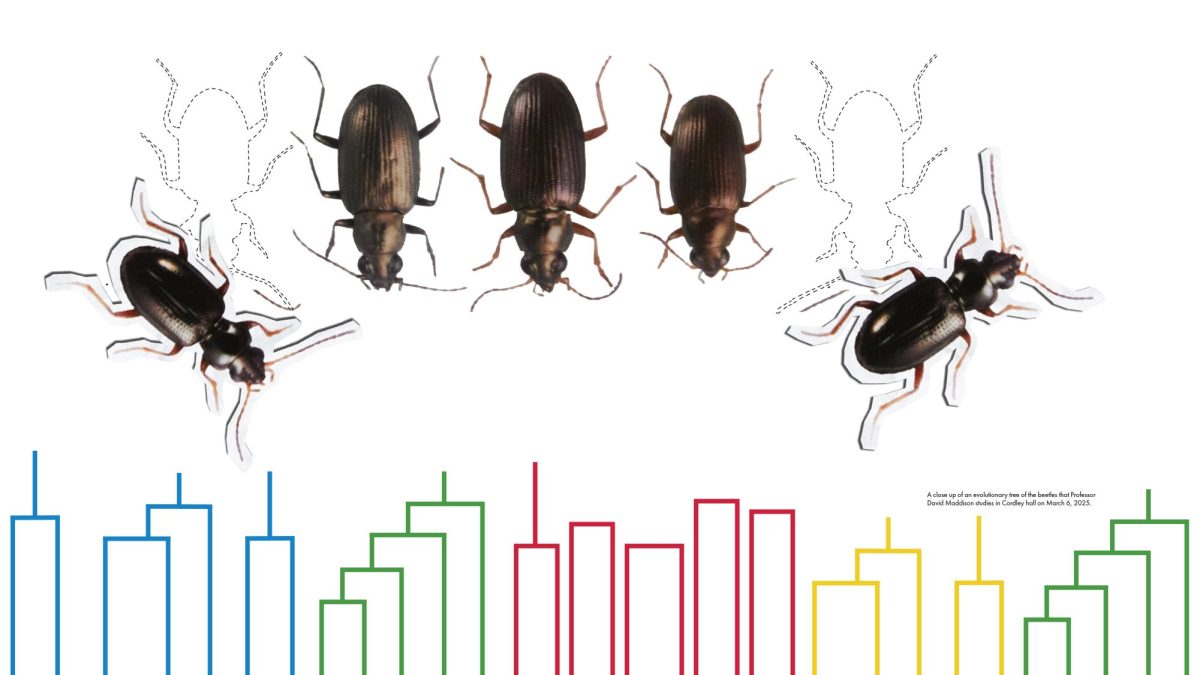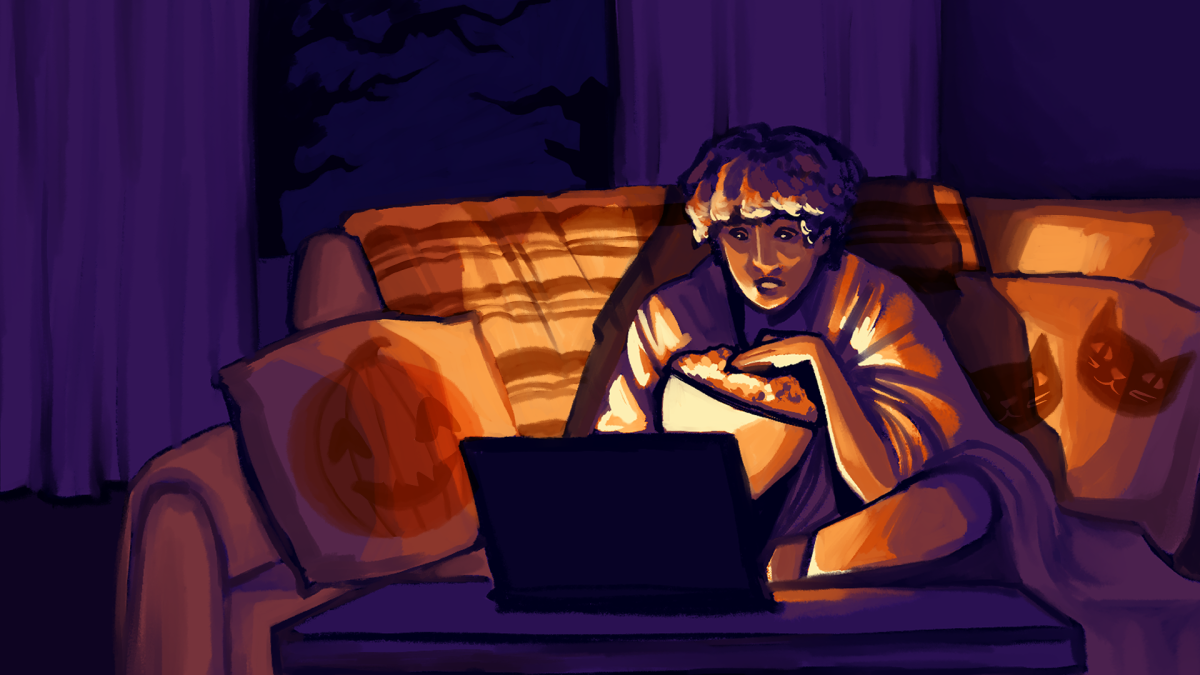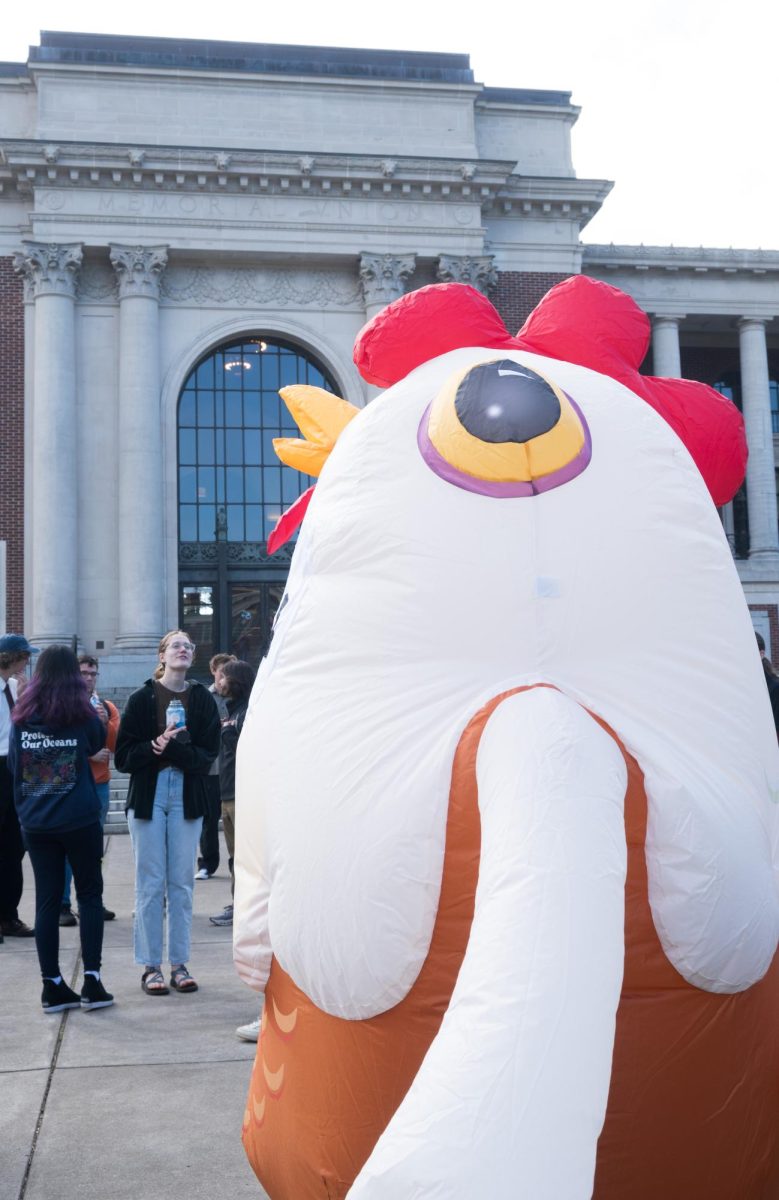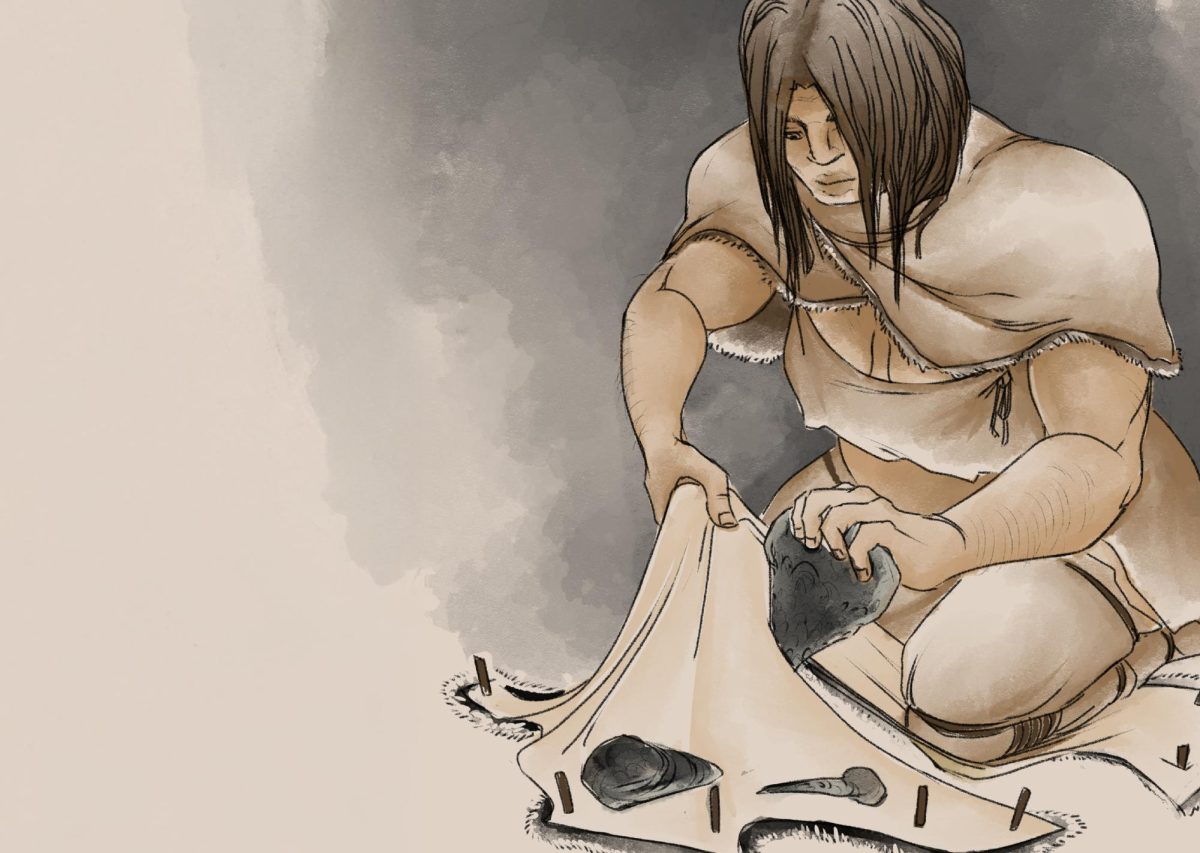David Maddison, a professor in the Department of Integrative Biology at Oregon State University, is really into beetles.
Save for a few exceptions, ground beetles can look pretty unimpressive to the naked eye. Their round, black bodies might be covered in a spot or two, maybe there’s a strange antenna or body shape. But Maddison found that by using a microscope, he was able to see colors and patterns that couldn’t be found with the naked eye.
“(There’s) this hidden world,” Maddison said. “(Beetles are) also a group that in general (are) not all that well-known, certainly compared to a lot of other groups of organisms.”
In addition to research, another way Maddison shares information about the lesser known world of beetles is through his drawings.
Maddison’s art skills grew alongside his love for beetles, starting when he was merely a teenager. Using a mix of colored pencils, inks and watercolors, Maddison uses his illustrations as a way to express his passion for beetles.
“The grad students in my department figured out that I also illustrated,” Maddison said, “and they basically just grabbed me and said, ‘David, would you please teach a scientific illustration course.’”
In 2013, Maddison taught his first course in scientific illustration. Along with his art, Maddison continued with conducting research on beetles and their subspecies.
Two years later, during a class field trip to Klamath Marsh, Maddison and his class came across two unique beetles they hadn’t seen before. After a few rounds of data analysis, Maddison realized they’d discovered a new species of beetle.
Currently, Maddison is working on a research paper to publish in a scientific journal where he will reveal the names of the new beetle species he’s discovered, as well as additional information about them.
Maddison’s students also caught the bug of discovery.
One student, who Maddison identified as Shannon, discovered a new species of beetles in her parents’ backyard. As far as they know, this particular species only lives in Shannon’s parents’ backyard.
In his free time, Maddison is working on a graphic novel, which showcases the class that he has the fondest memories of teaching.
The graphic novel will give Maddison the chance to share the stories of his and his students’ discoveries. The beetle that Shannon found will be included in Maddison’s graphic novel under her own name.
Throughout his career, Maddison said he has been involved in discovering over 40 different subspecies of beetles.
Maddison said feels he is now on the cusp of retirement — at least with teaching.
After years of teaching and conducting research, as well as helping to discover the different subspecies of beetles, Maddison admitted there were times he lost his passion for the science.
“I started drifting away from (beetles), because I thought it was more likely I would get funding and that I’d be successful in a scientific career if I did other things,” Maddison said.
After achieving the financial and career stability that came with tenure, Maddison found that it was time to revisit the beetles once again.
“Now I look back and I realize the science I’ve done since that point (reaching tenure) is way better, way higher quality,” Maddison said.
It became clear to Maddison that his passion was a major reason the quality of his work increased. Though Maddison knows that it’s not easy for everyone to follow their passion, he encourages people to do so.
“There’s so many messages told to us — by society, by whoever, by ourselves — that we can’t do something,” Maddison said. “Trying to let go of those negative messages is, I think, probably the most important thing.”
To see Maddison’s illustrations or to learn more about his work, you can visit subulatepalpomere.com.



















